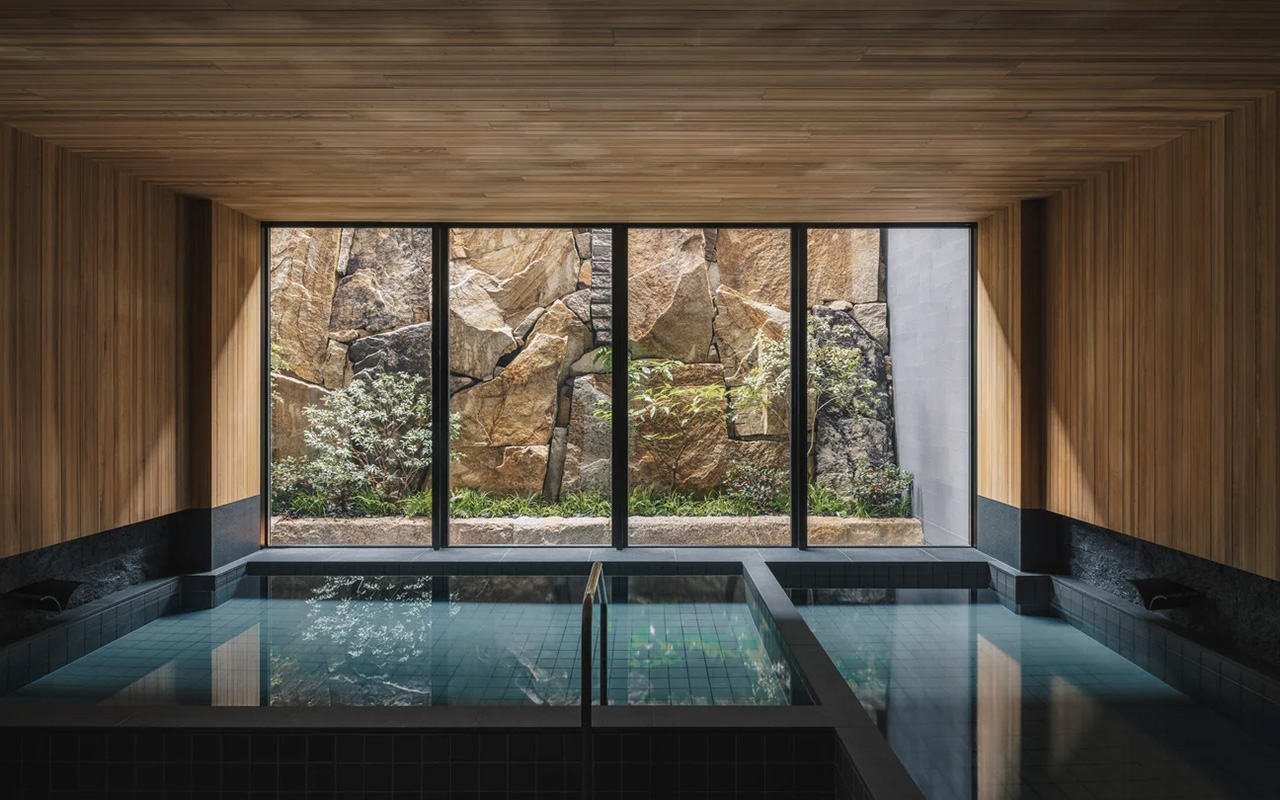
[ad_1]
Kyoto’s serene pastiche of perfectly manicured Buddhist temple gardens, Shinto shrines, quaint eateries, crafts culture, labyrinth streets, and leisurely flowing rivers have made the historical former capital of Japan a popular tourist destination – too popular. Tourism has grown at such a breakneck speed since the nation reopened after the pandemic, that the city has recently announced plans to counter issues related to over tourism by limiting or restricting access to select sections. And as someone who has recently visited the city, it is no exaggeration to say certain areas of Kyoto are buckling under the pressure of too much of a good thing, where selfies rather than serenity have been reigning supreme.
But step even just a few streets over from most any of Kyoto’s famous sites, and a sense of something wholly new and delightful awaiting just around the corner often tickles the neck. This is all to say, poetic natural beauty and a sense of serendipity are still hallmarks of a visit to Kyoto. The newly opened Six Senses Kyoto is emblematic of the tranquility, refinement, and history still to be found within the ancient capital’s Higashiyama Ward.
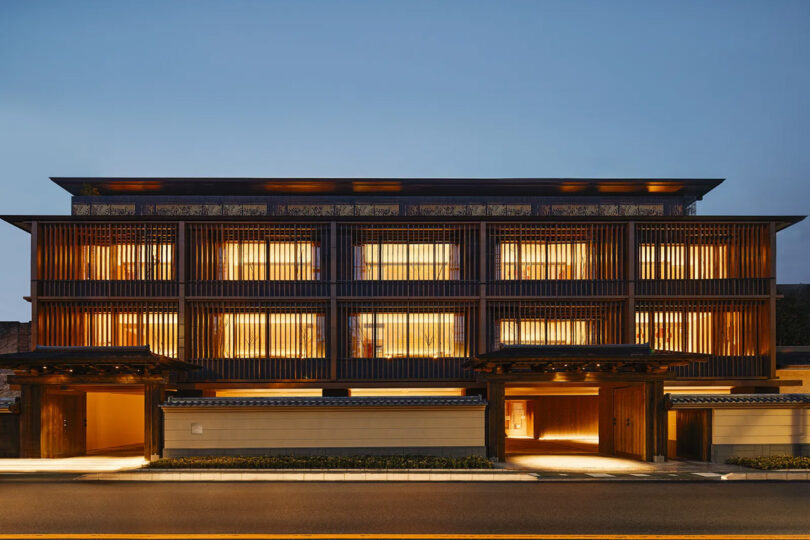
In “the heart of the heart” of downtown Kyoto near Myoho-in temple and Tokyokuni-Jinja shrine, and within walking distance of the colorful Gion district, the BLINK Design Group designed hotel looks modern, yet feels traditionally Kyoto.
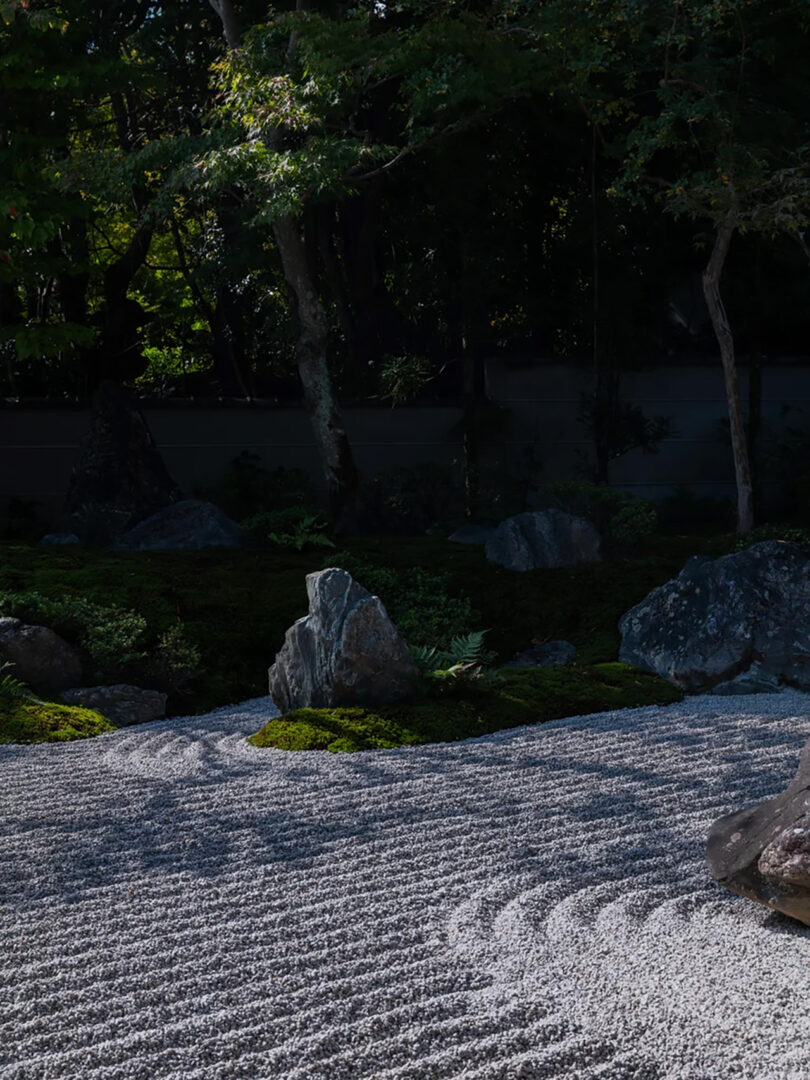
An intimate floorpan of 81 guest rooms and suites range from 450 to 2,500 square feet, with each room afforded their own unique view of surrounding gardens or the hotel’s courtyard. Small gardens staged outside bedrooms and bathrooms invite a mood of calm, with the sense of serenity bolstered by the hotel’s understated interior design emphasis on a natural simplicity. Beds are fitted with organic mattresses, temperature regulating pillows, duvets, and organic cotton sheets for a peaceful night’s rest.

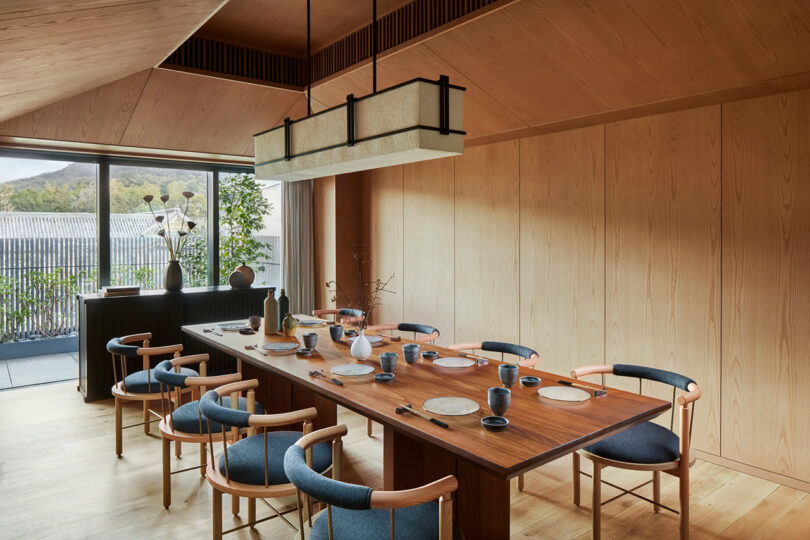
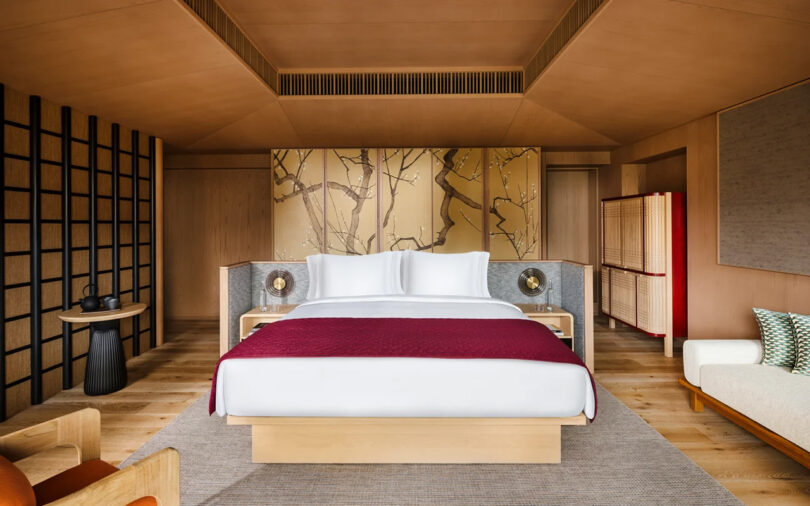
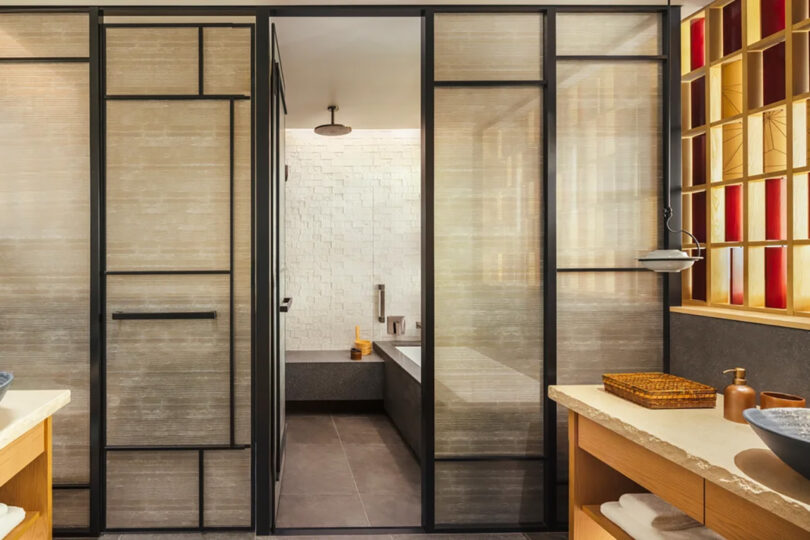
Textural details such as recycled washi paper, traditional plasterwork, and natural stone flooring were all chosen as an extension of the the Heian era (794-1185 C.E.) concept known as Miyabi (雅). It encompasses an aesthetic ideal defined by an elegant refinement realized here through hues that echo the surrounding landscape as well as Kyoto-sourced artisan wares and furnishings.
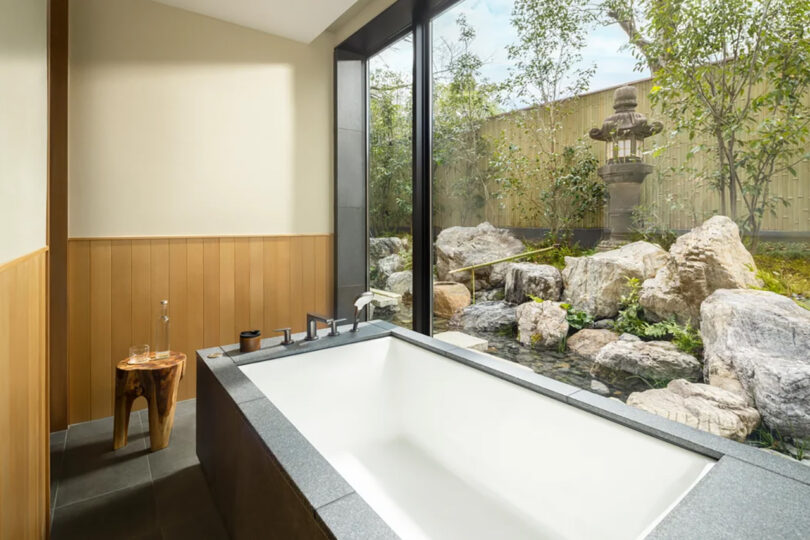
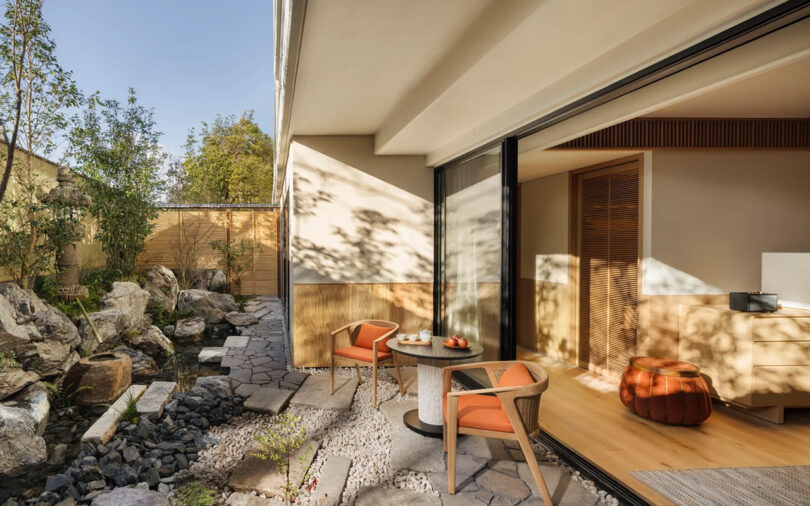
No sense is left untouched, with the hotel wafting an evocative scent of the Japanese forest and yuzu formulated for the hotel by Tomoko Saito Aromatique Studio.
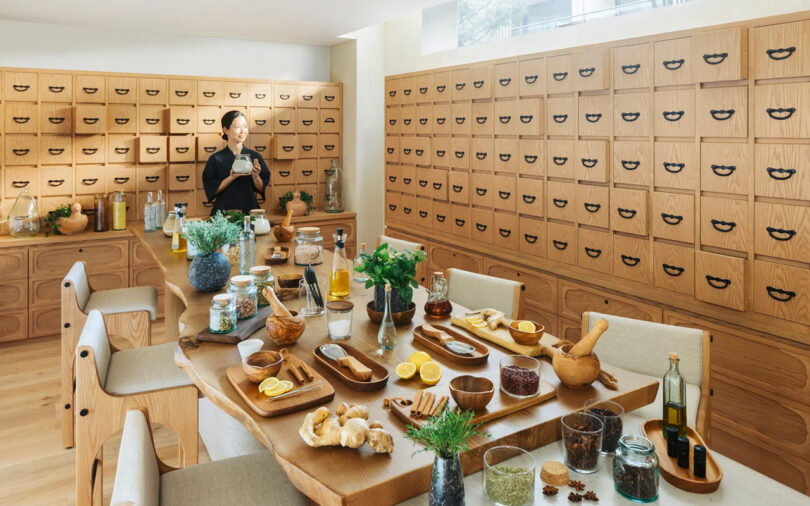
Wellness options are offered in plentitude with a spa, sauna, bath house, swimming pool, tea lounge, and pool, available for guests to indulge body and mind attentive to the importance of atmosphere. Guests are invited to concoct their own natural body products at the apothecary-themed Alchemy Bar, indulge in a Kyoto-exclusive Ah-un treatment combining bodywork and sound therapies, or dine at the hotel’s hyper-seasonal and locally sourced restaurant Sekki.
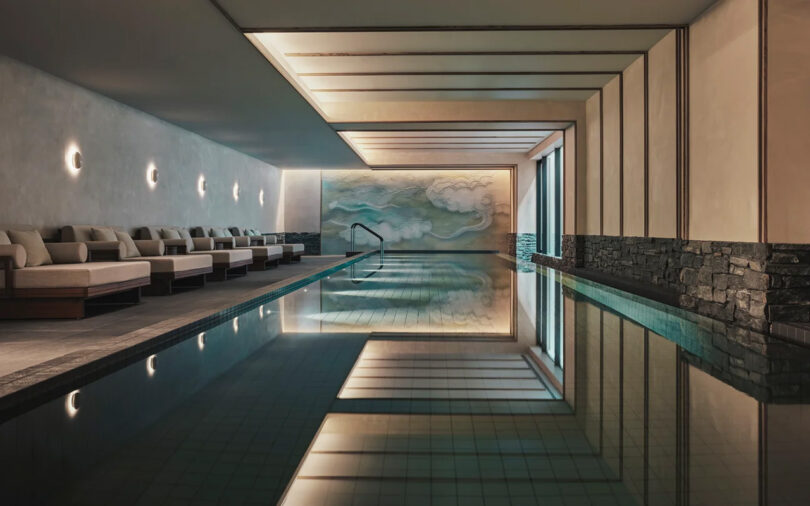

Lastly, Six Senses Kyoto donates 0.5 percent of the hotel’s revenue to locally based organizations, Biotope Network Kyoto and Council for Kyoto Traditional Forest Culture, in regenerating, conserving, and educating younger generations on forestry revitalization and its cultural value.
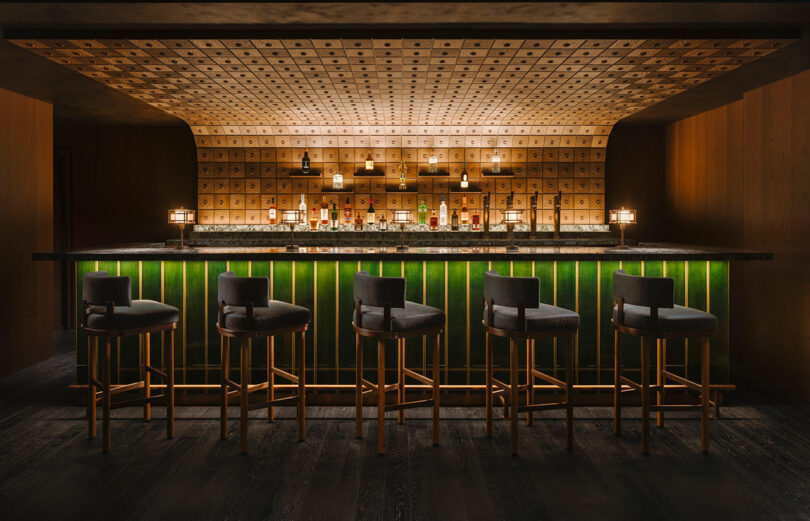
What: Six Senses Kyoto
Where: 431 Myōhōin Maekawachō, Higashiyama Ward, Kyoto, 605-0932, Japan
How much: Starting at $1,002 double occupancy for Superior King room.
Highlights: The hotel is strategically situated a safe distance from, but still near, many of the city’s most iconic locations. Exploration by foot is not only an option, but a highly recommended way to happen upon hidden shops and eateries, including POJ Studio’s retail shop two pedestrian streets over. The hotel also hosts activities ranging from workshops teaching furoshiki – the traditional Japanese practice of using cloth to wrap items – Shodo calligraphy, and dry zen garden tutorials.
Design draw: Art awaits just out the door of the hotel at the neighboring Kyoto National Museum, with Kawai Kanjiro’s House a poetically preserved residence-turned-museum dedicated to one of the country’s most revered ceramicists located just a few streets over. Be sure to drop by the anthropomorphic Face House by Japanese architect Yamashita Kazumasa for an IG-worthy snapshot alongside a gashapon capsule toy sold outside the building as an affordable and unique souvenir. A day trip up to Garden of Fine Arts Kyoto designed by Tadao Ando invites visitors to stroll through a picture park combining art, botanic gardens, and a masterclass of architecture imagined to harmonize with the landscape. Time your visit right and you can attend the annual Design Week Kyoto, an event spotlighting the city’s rich established and emerging talents of design craft.
Book it: Six Senses Kyoto
Go virtually on vacation with more design destinations right here.

Gregory Han is a Senior Editor at Design Milk. A Los Angeles native with a profound love and curiosity for design, hiking, tide pools, and road trips, a selection of his adventures and musings can be found at gregoryhan.com.
[ad_2]
Zita boo
Interesting
Anas Suleiman
Wow